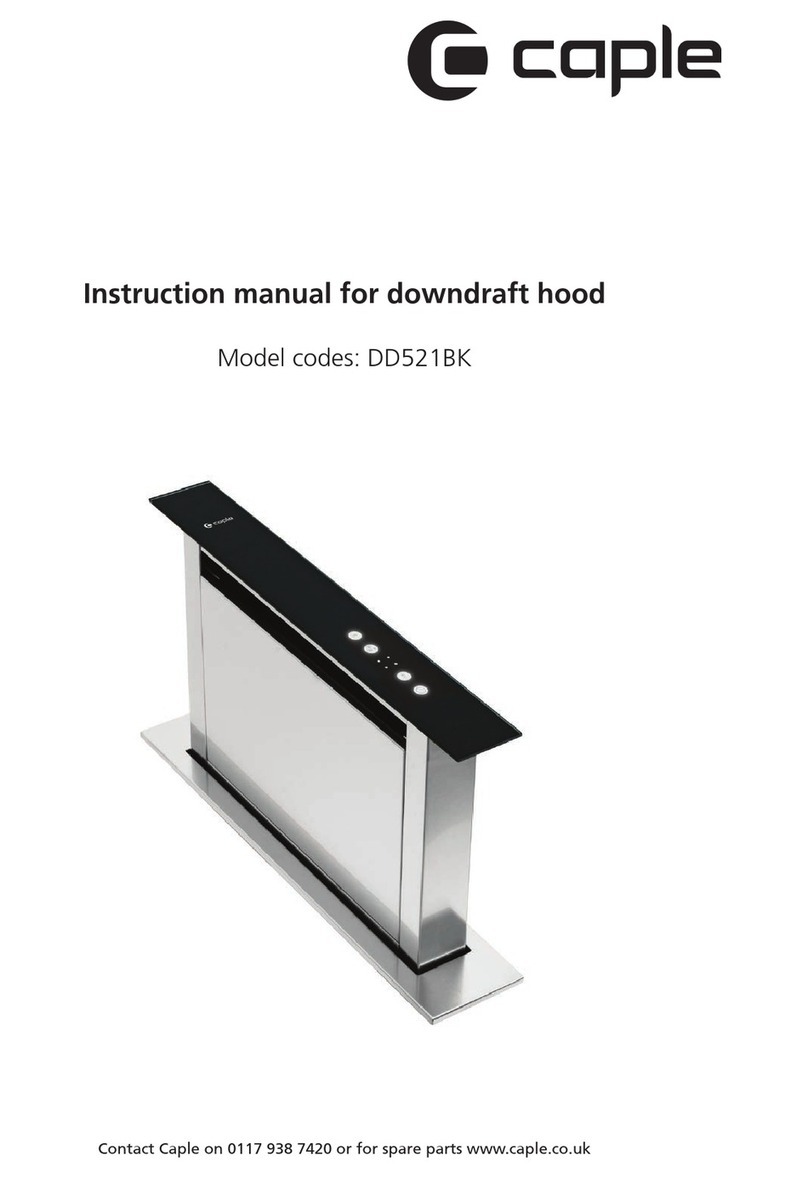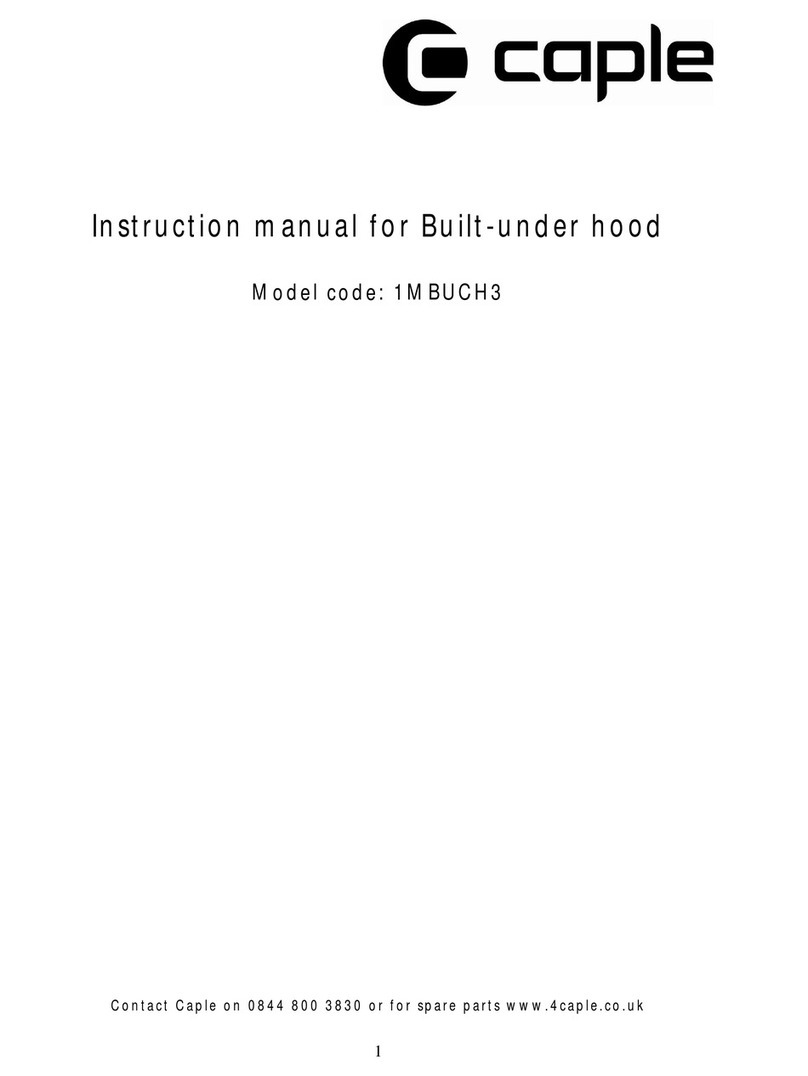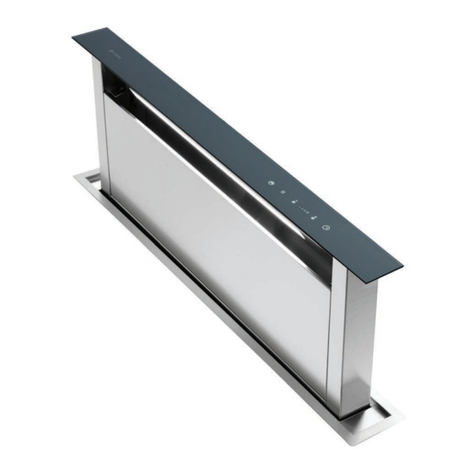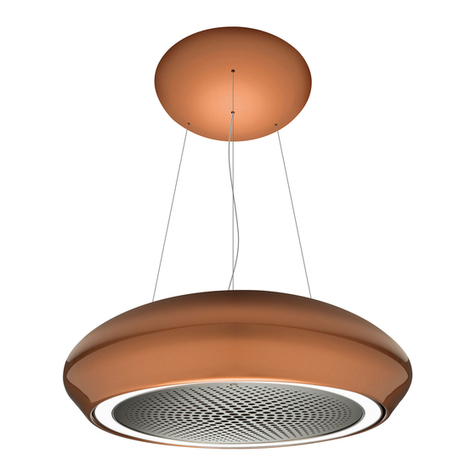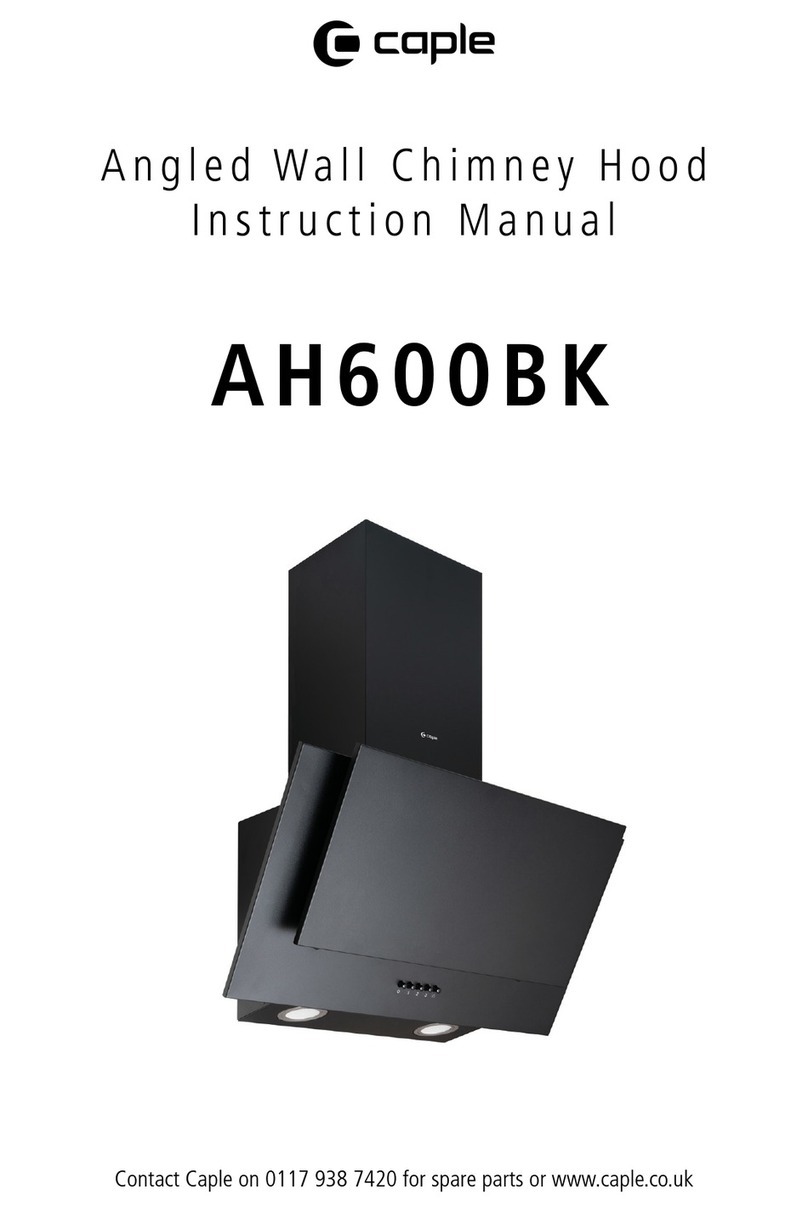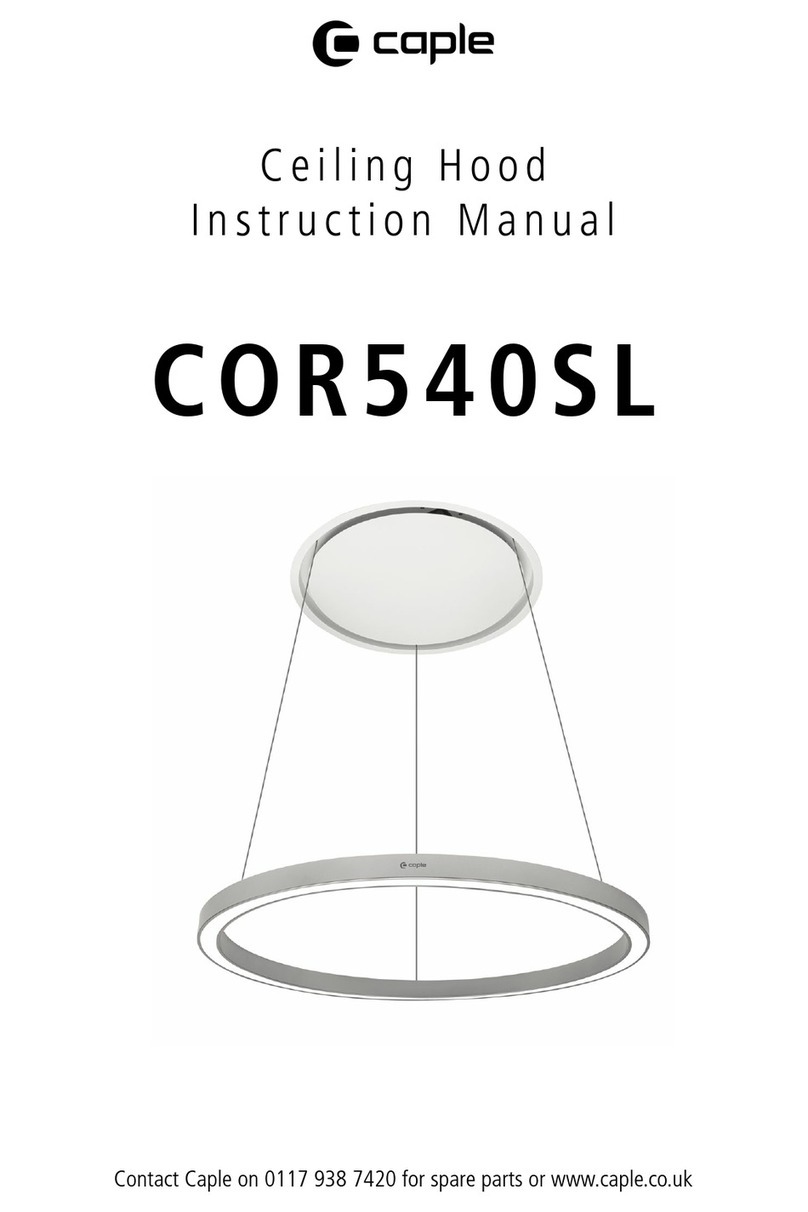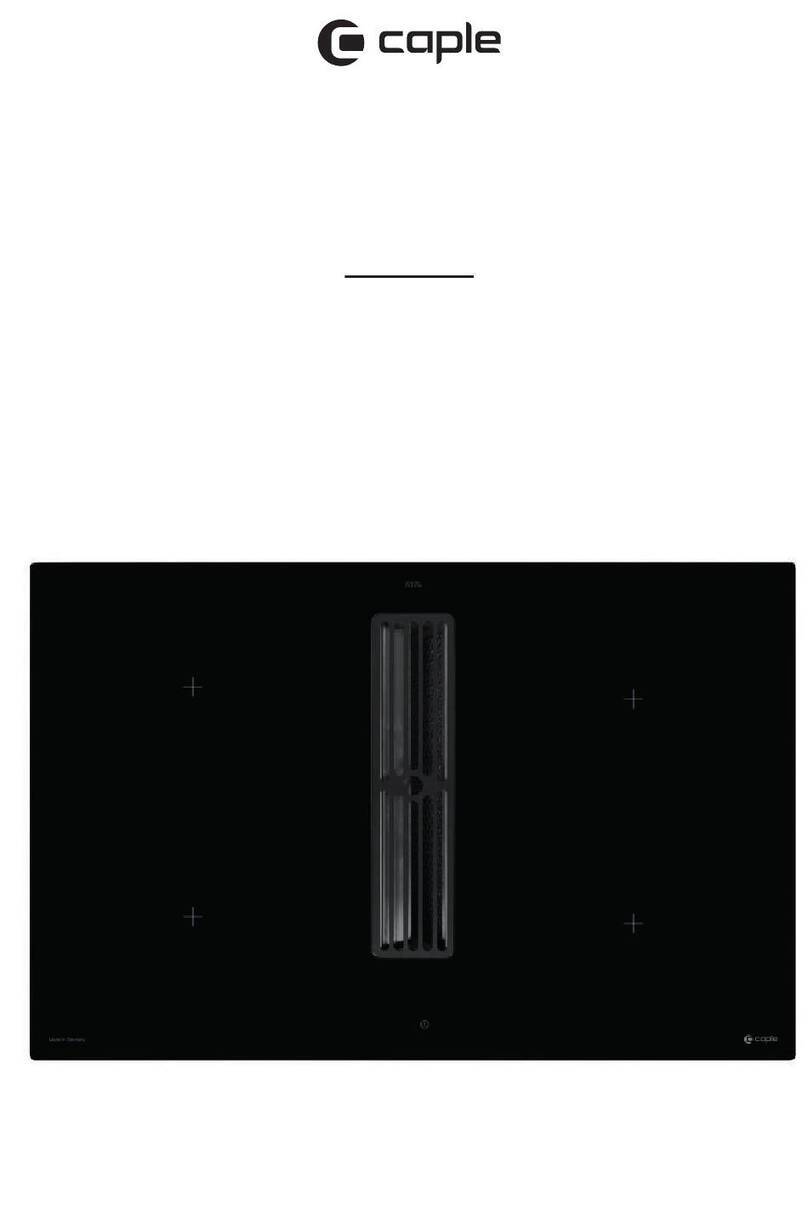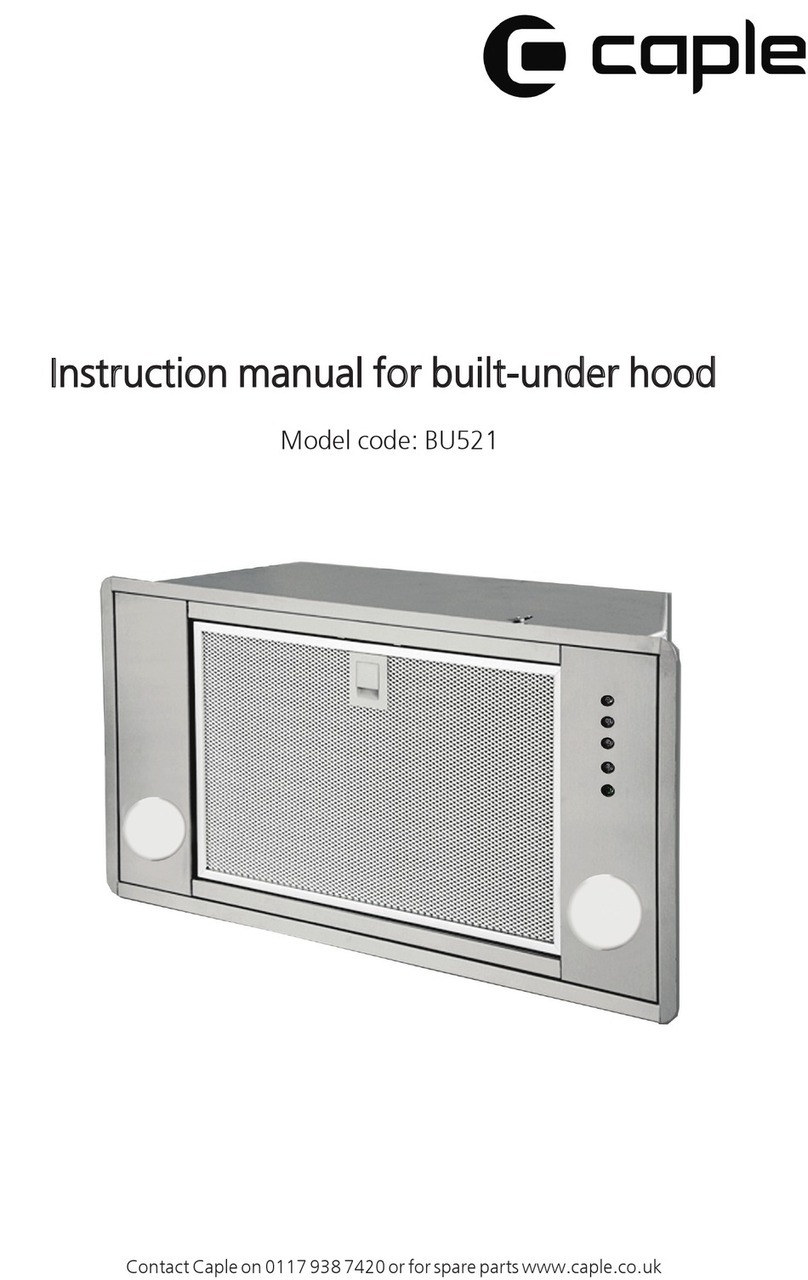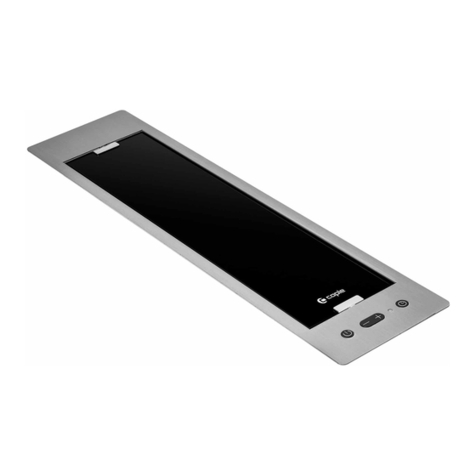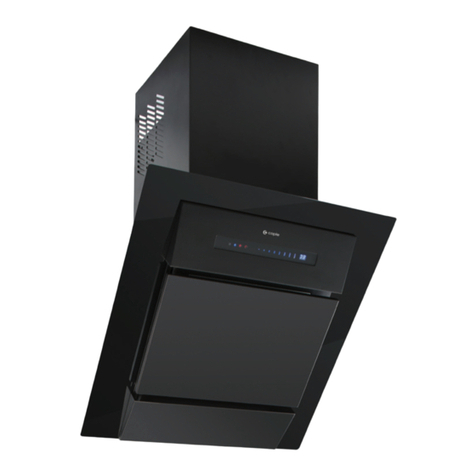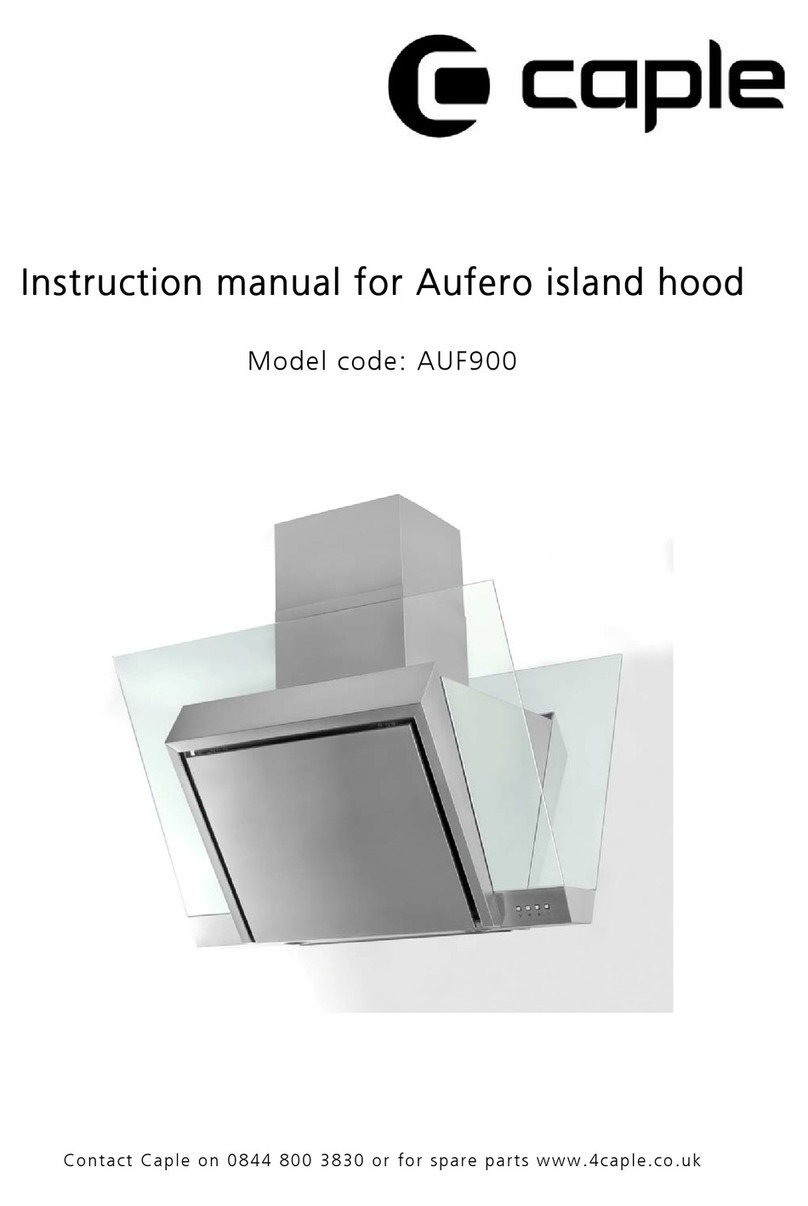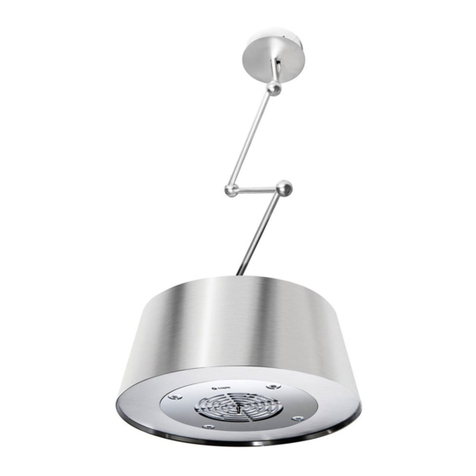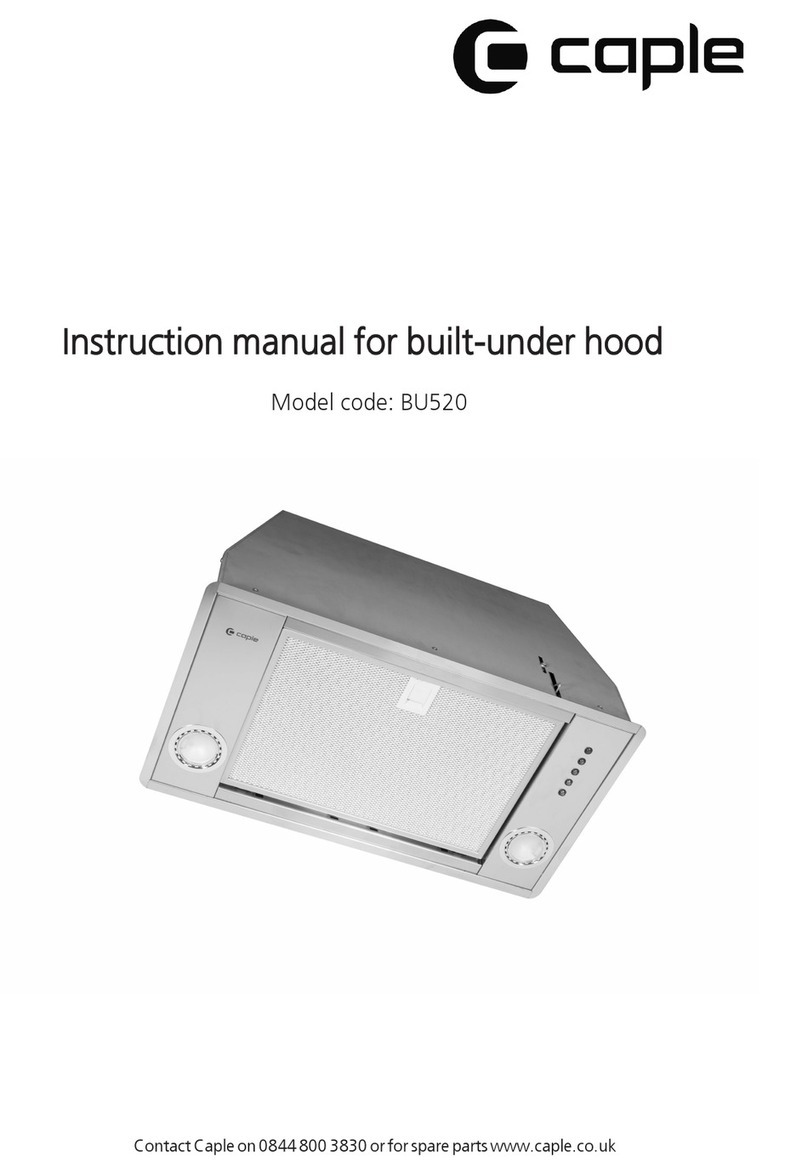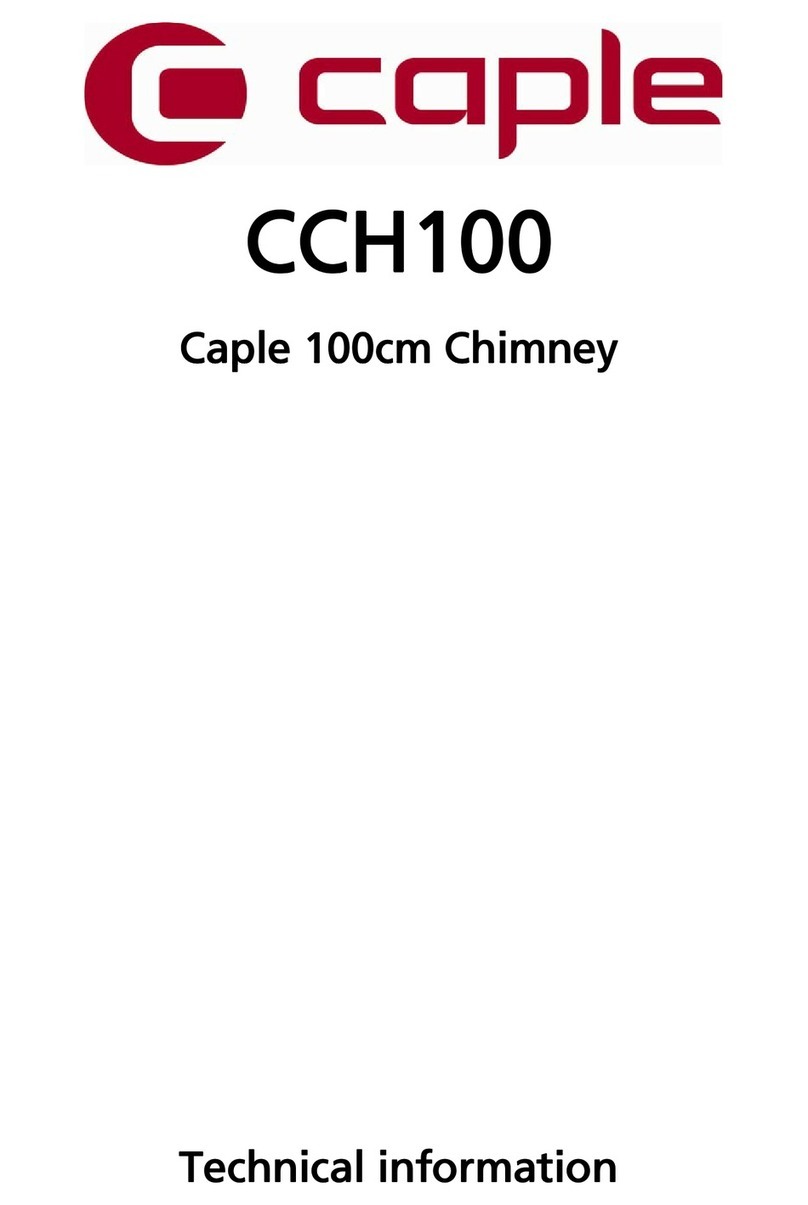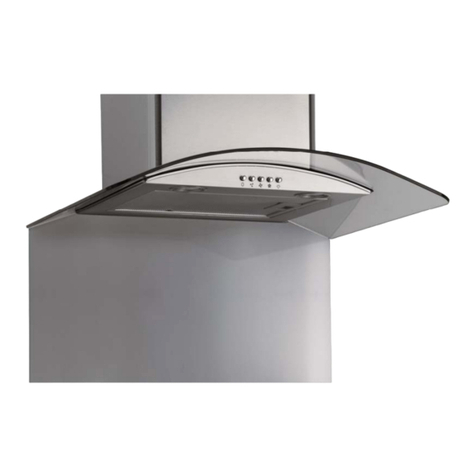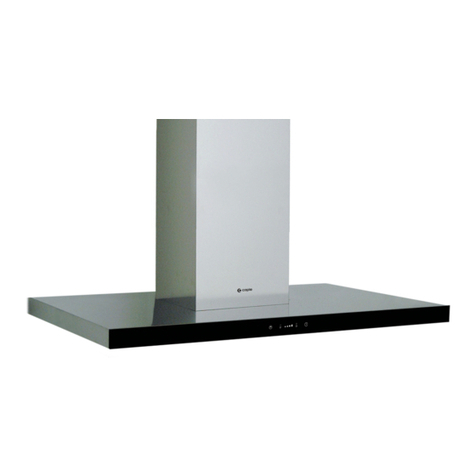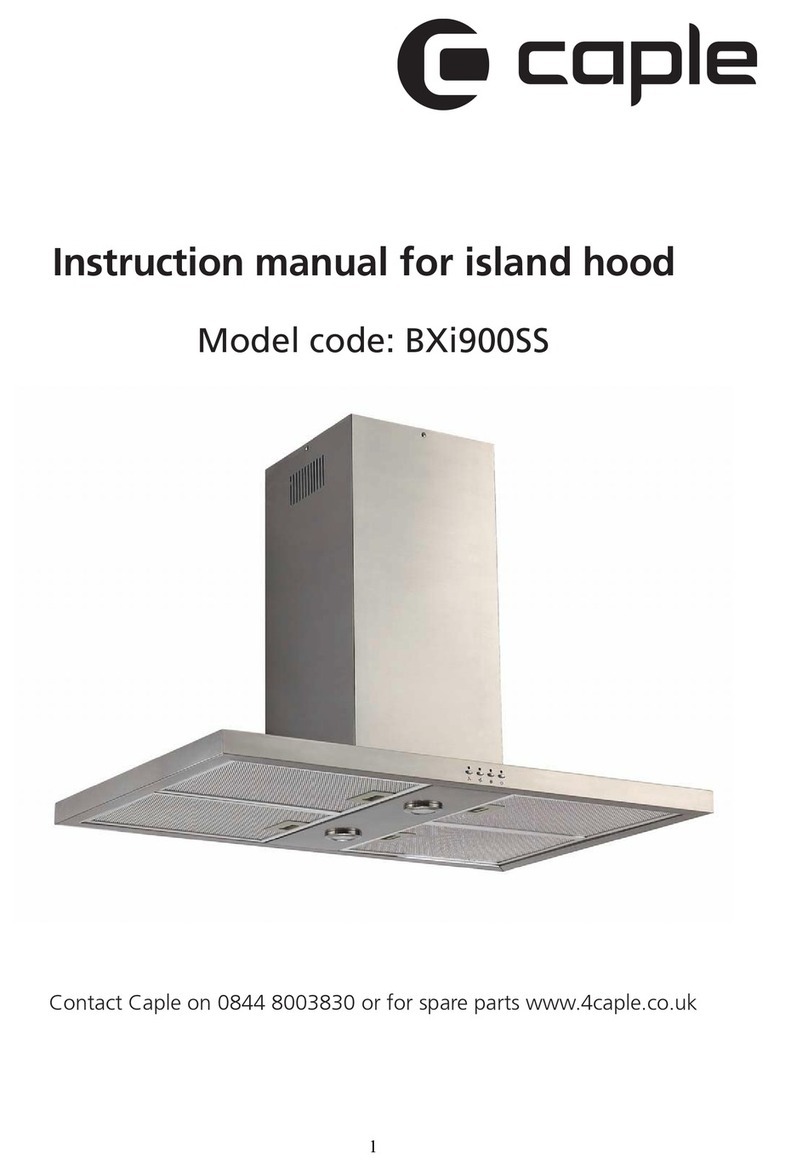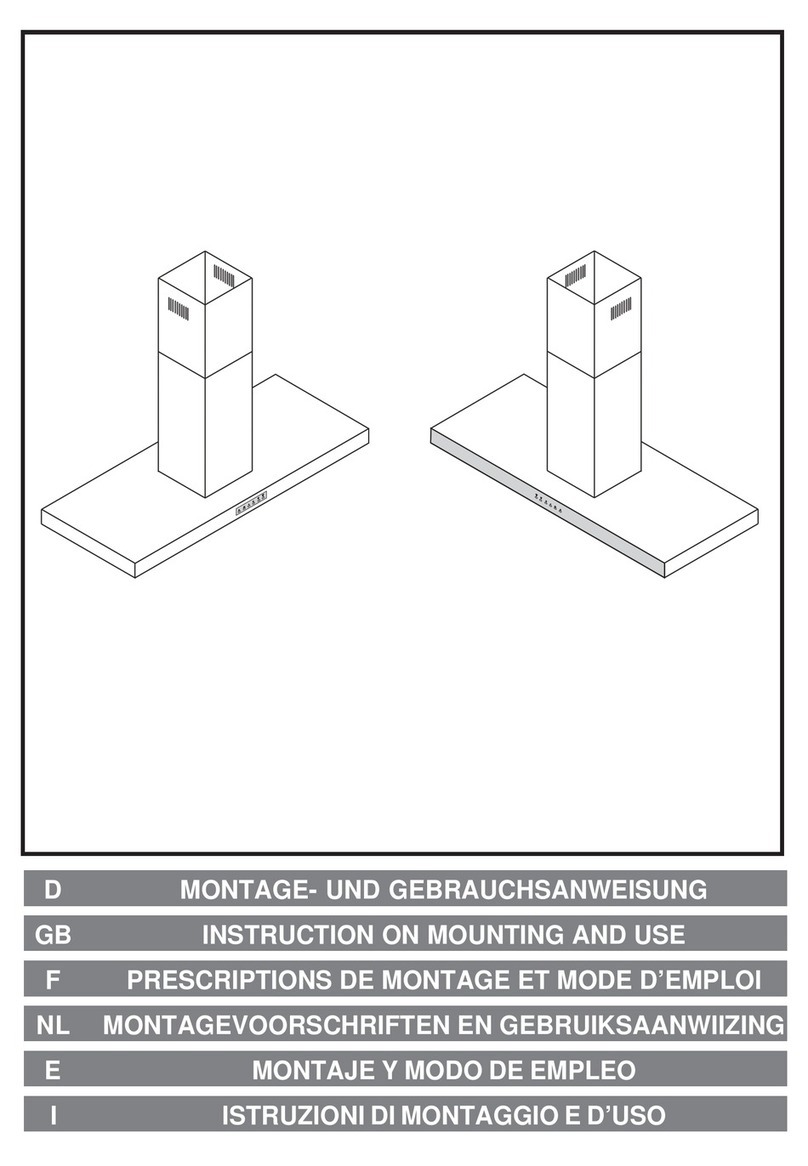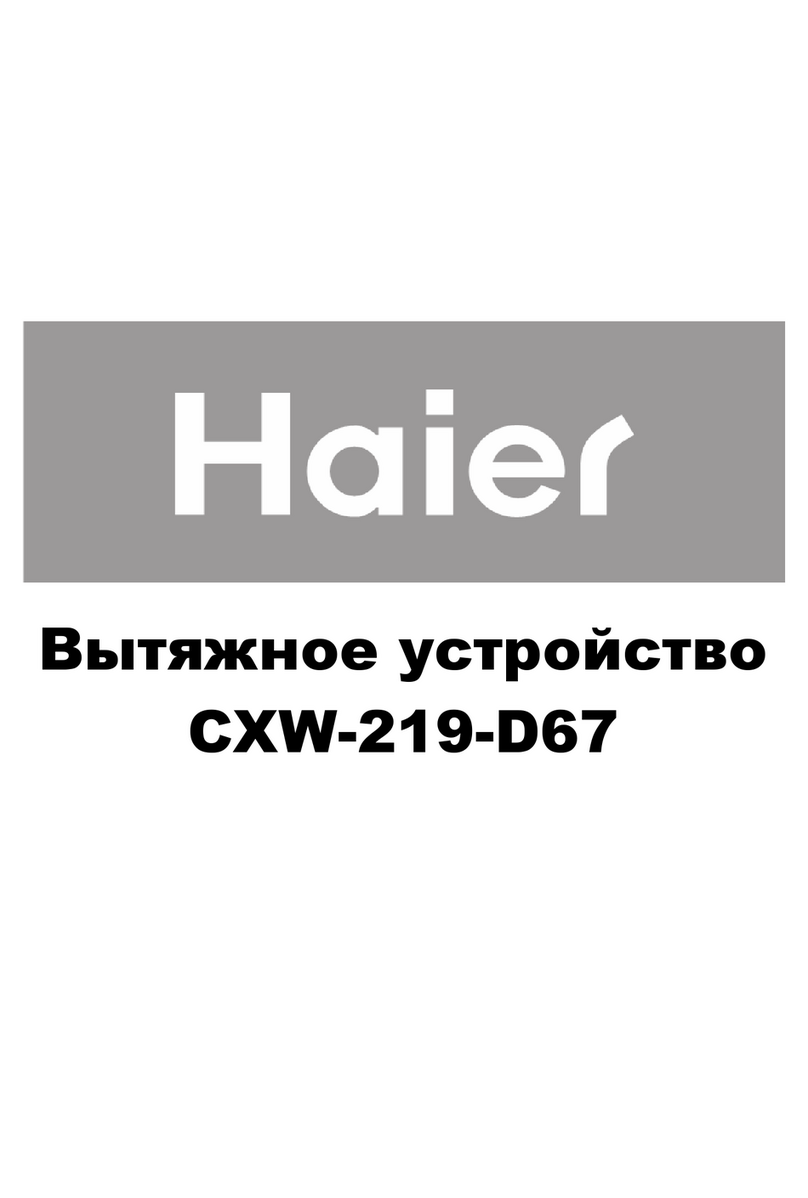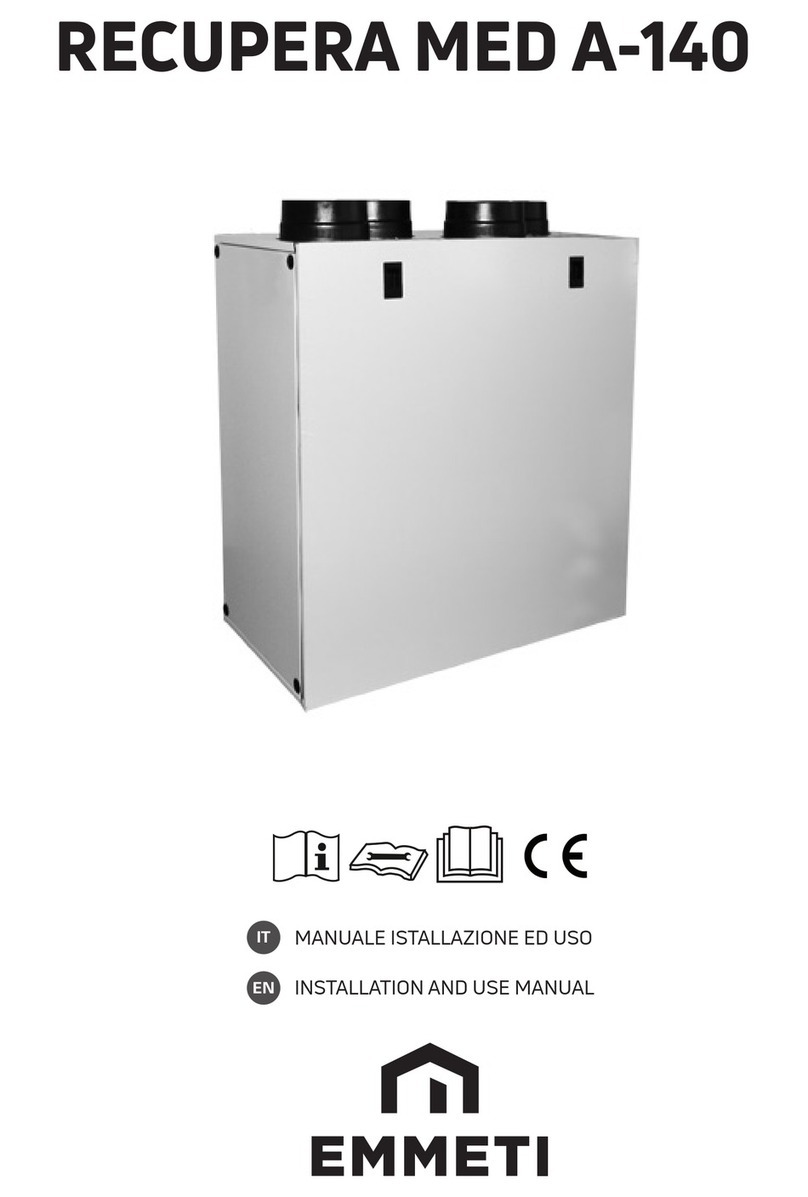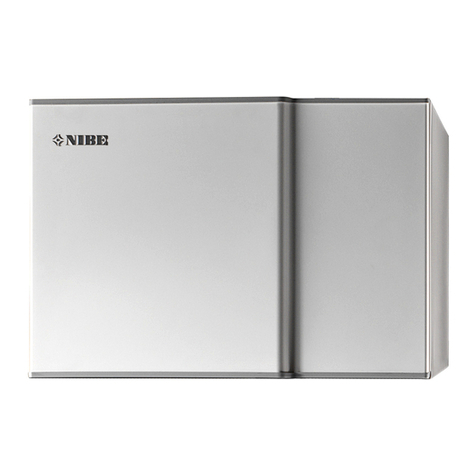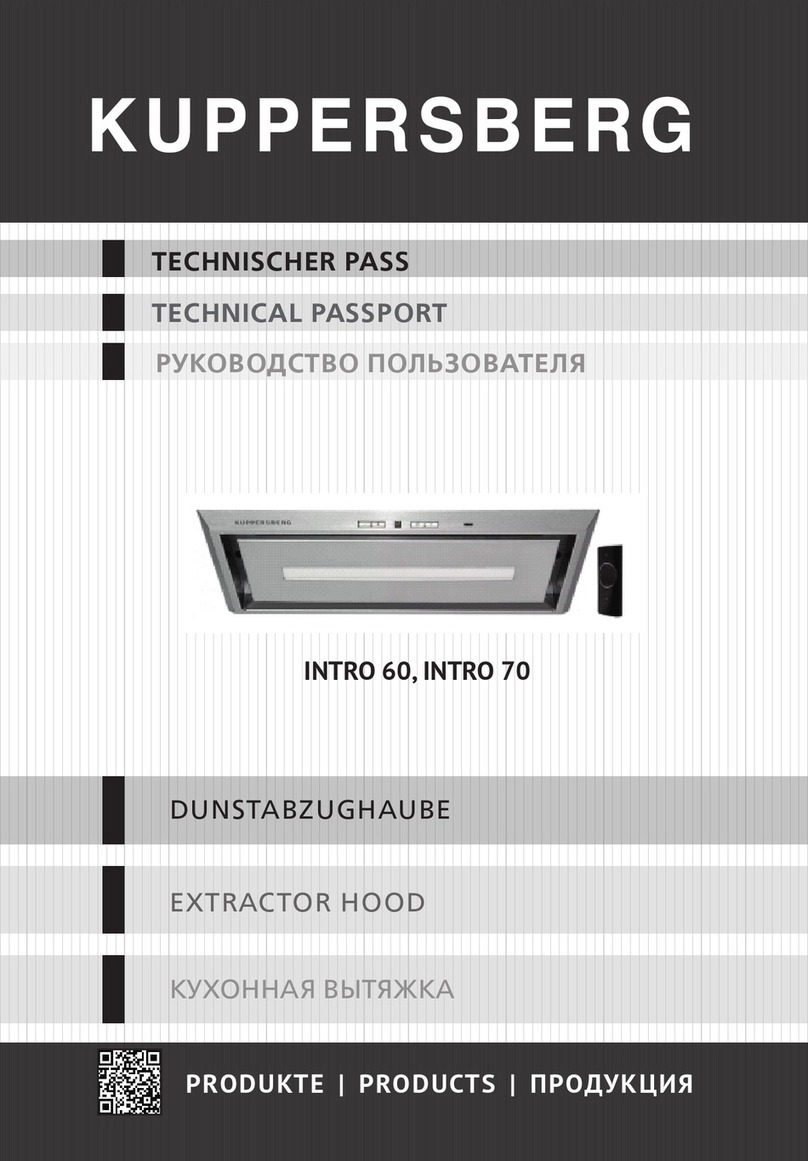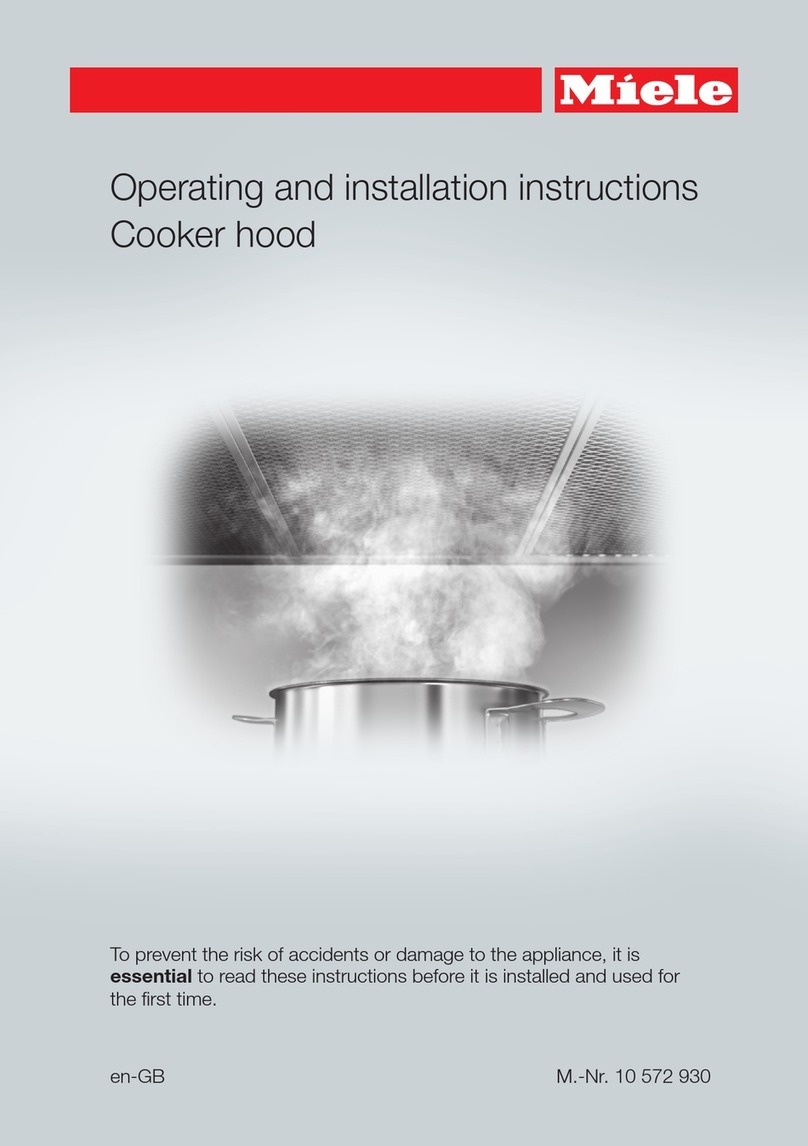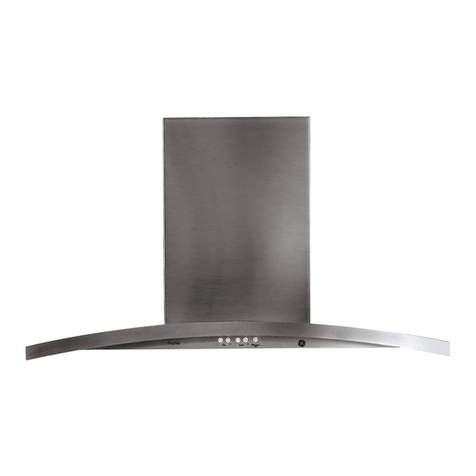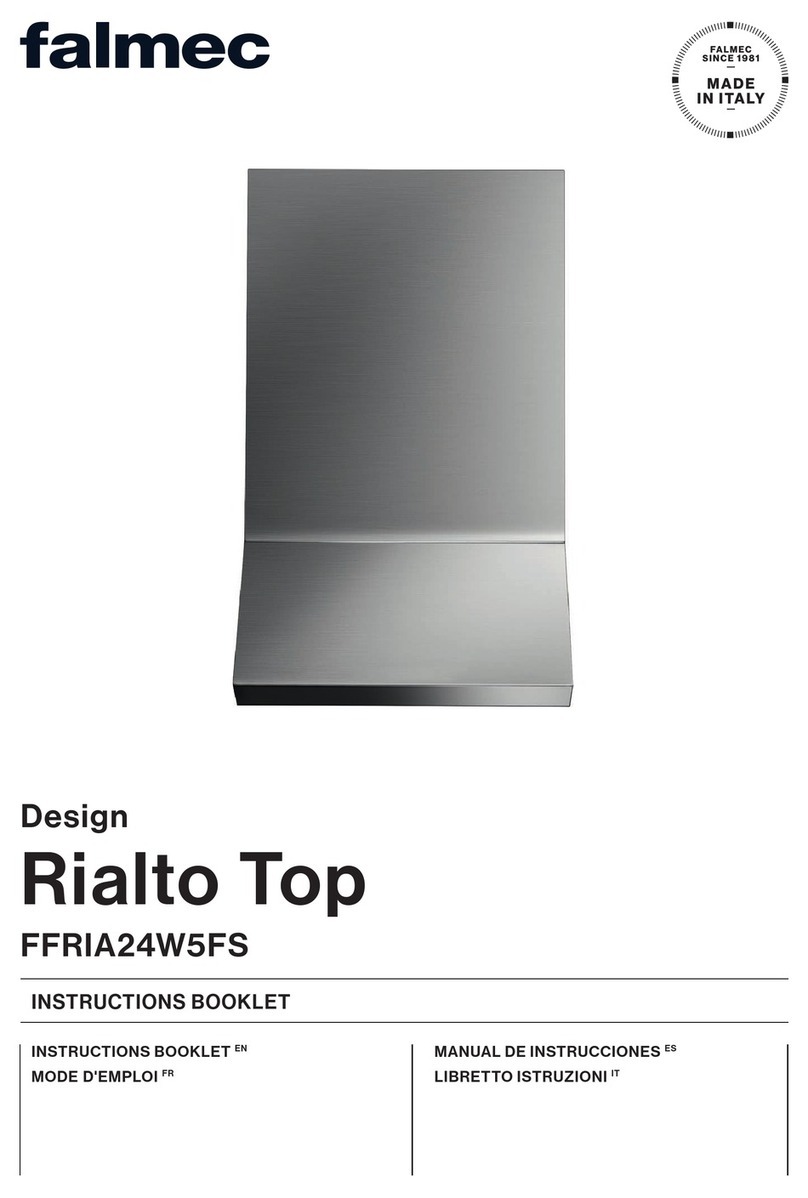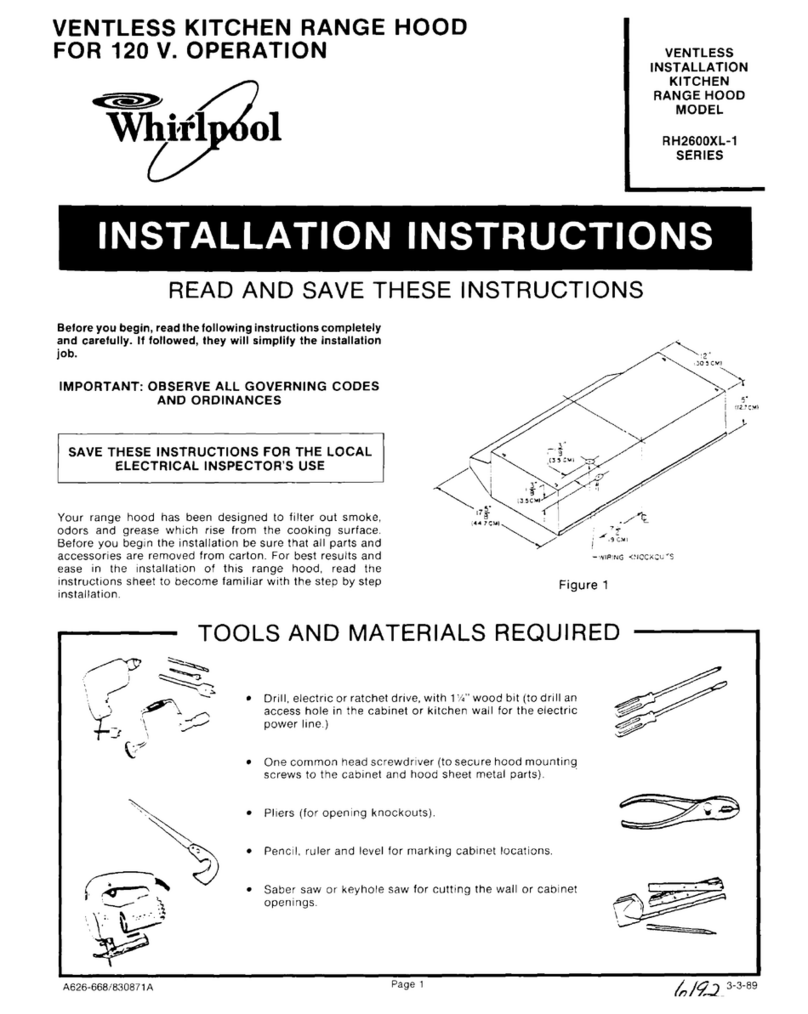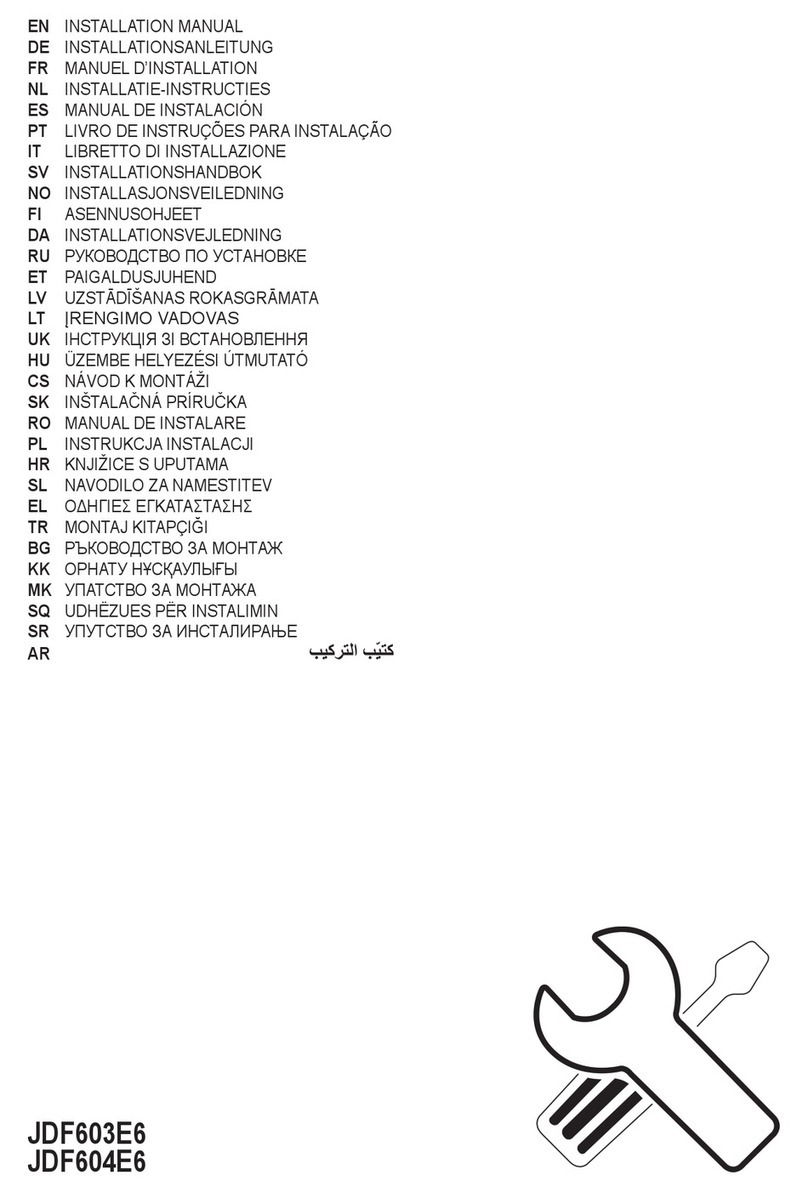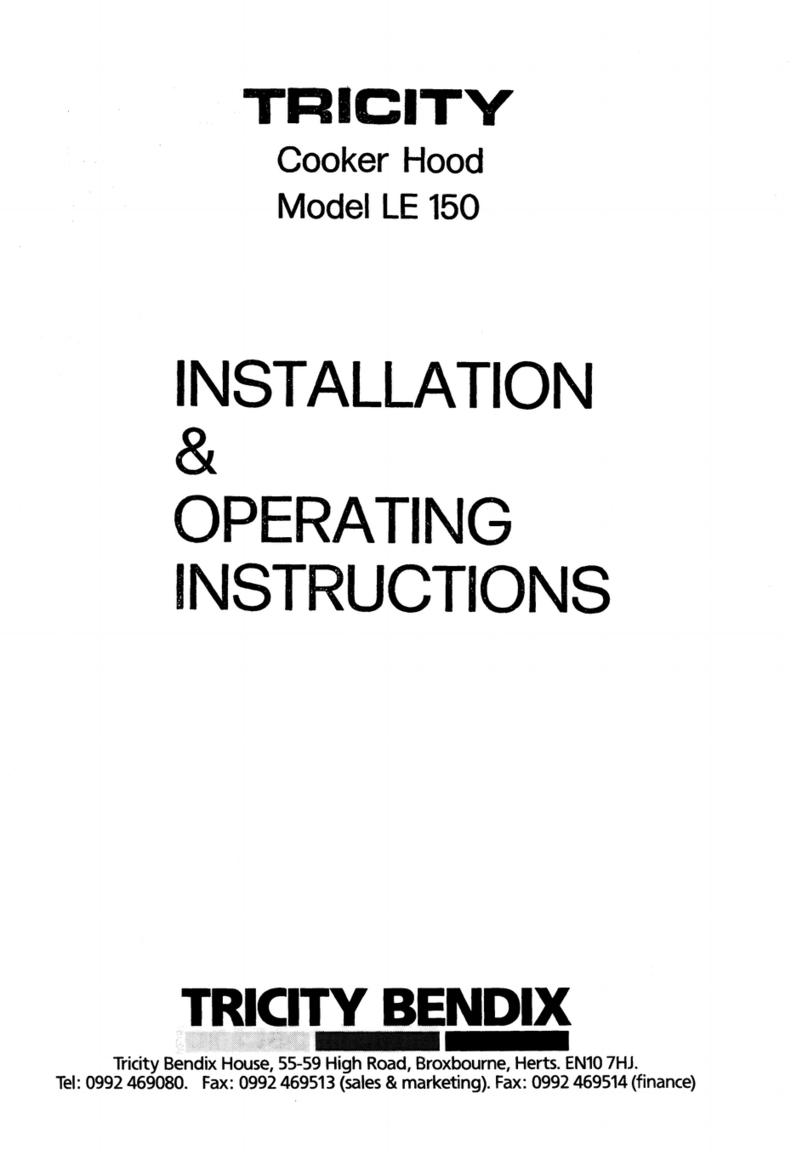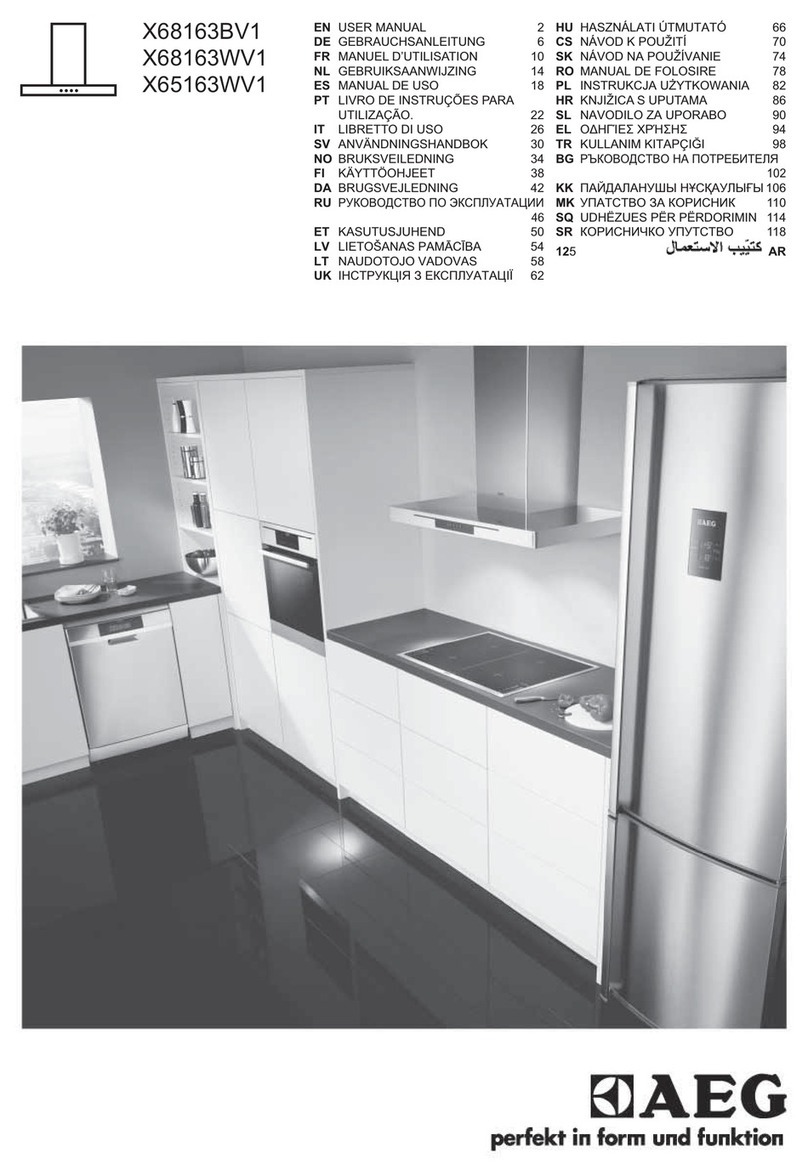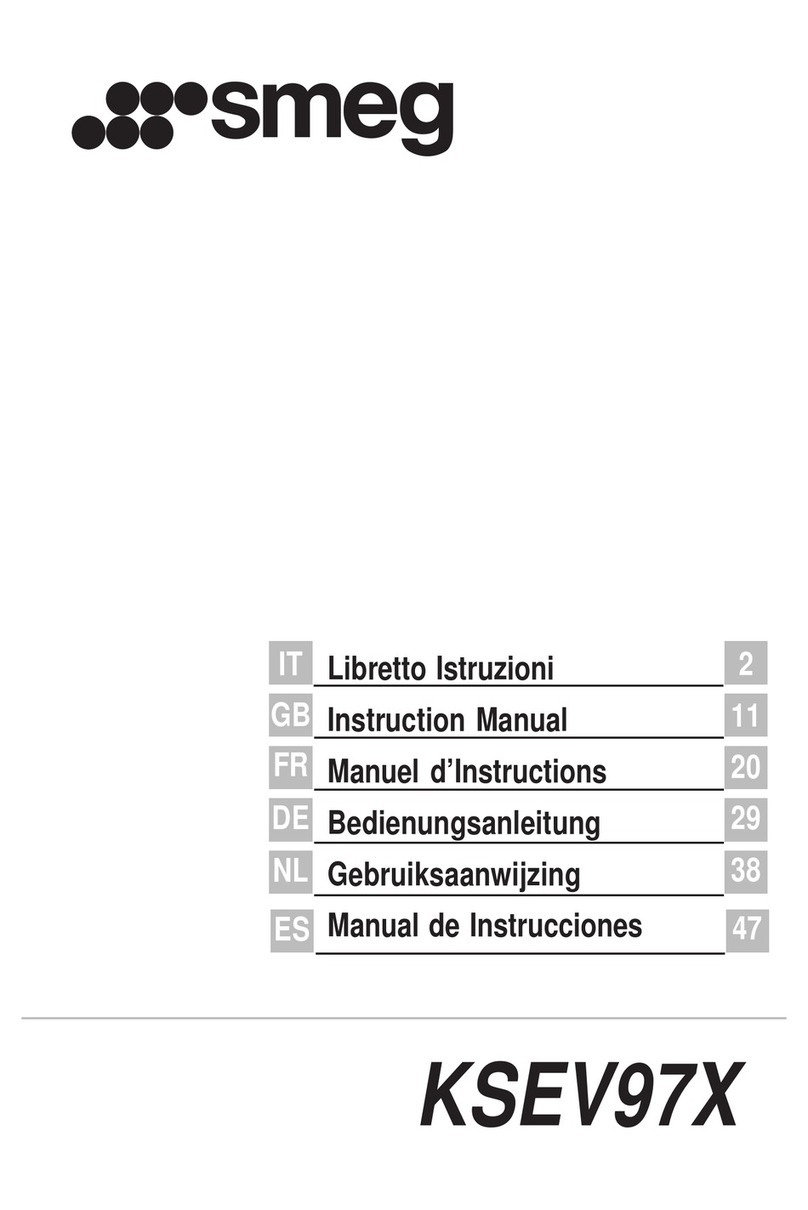
Page 6 T60-80 Extractors.doc
INSTALLATION INSTRUCTIONS
FIXING THE COOKER HOOD INTO
THE CANOPY
The cooker hood is fixed to the housing
using the screw holes located around the
base of the casing visible when the inlet
grille has been removed.
Measure the underside of the canopy
and mark the position for the cut-out
(497mm wide by 259mm deep) for the
DL/BUCHP3 and T60BUCHSS3 and
(677mm wide by 259mm deep) for the
T80BUCHSS3 and check the positioning
of the hole is correct with the drawing in
fig. 1.
Remove the grille panel by supporting
the grille with one hand and drawing
down on the two grey handles (located
at each side of the grille) with the other
as illustrated in fig. 2.
Raise the cooker hood into the cut-out
and mark the position for the fixing
screws as illustrated in fig. 3. Pilot drill
the fixing holes and fit the cooker hood
using the screws supplied.
Refit the grille panel by supporting the
grille with one hand and pushing
upwards on the two grey handles
(located at each side of the grille) with
the other as illustrated in fig. 4.
Ensure that provision is made for
the mains lead and ducting before
the cooker hood is secured to the
housing.
EXTRACTION (DUCTED)
The cooker hood is more effective when
used in the extraction mode (ducted to
the outside).
The ducting used must be 120mm. If
possible duct through the wall at the
rear of the canopy. For the best
performance use the shortest possible
duct run and the minimum number of
bends. Where flexible ducting is used it
should not be turned through very tight
bends as this may impair the
performance of the hood. The ducting
used must be manufactured from fire
retardant material produced to BS 476,
DIN 4102-B1.
(The maximum recommended length of
ducting including one 90° bend should
be 3 metres, to be reduced by 1 metre
for each 90° bend installed in the run).
RECIRCULATION (FILTERED)
If you are using the cooker hood for
recirculating, remove the metal inlet
grille panel and make sure the optional
(CAP 11 CF) charcoal filters are in
position following the instructions below.
To fit the charcoal filters, remove the
metal grille panel by supporting the grille
with one hand and drawing down on the
two grey handles (located at each side
of the grille) with the other as illustrated
in fig 2. Place one charcoal filter at a
time at each side of the fan housing, by
inserting the filter into the two slots in
the motor housing and securing the
opposite end with the securing tabs as
illustrated in fig. 10.
In the recirculation mode, contaminated
air enters the cooker hood and passes
through the grease and charcoal filters
and out into the kitchen through a
recirculation grille in the housing.
When installed in the recirculation mode
it will be necessary for the installer to
fabricate a chimney from the ducting
spigot on the top of the hood to a
terminal grille in the chimney as
illustrated in fig. 5.
